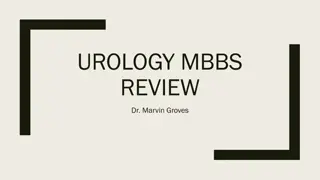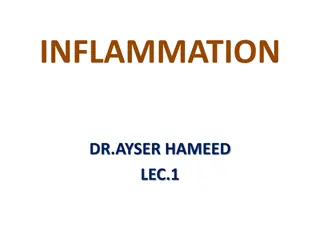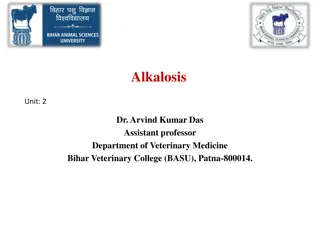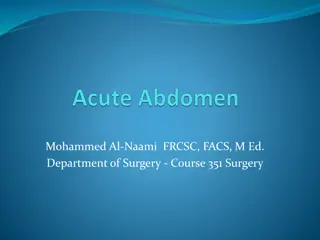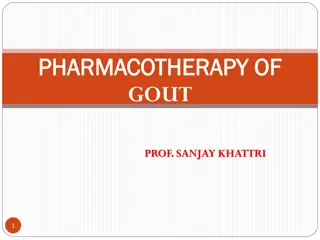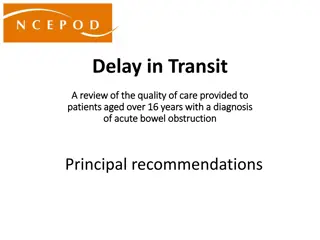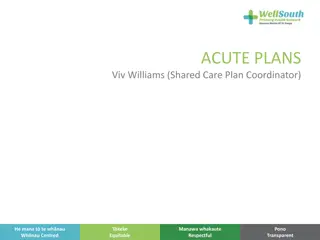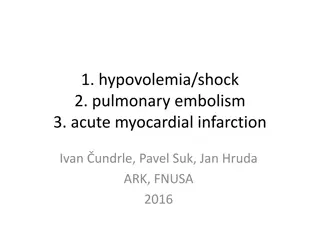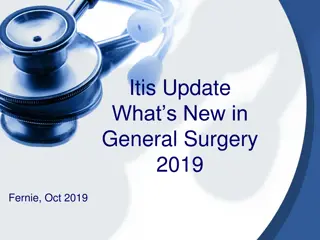Pathophysiology of Acute Appendicitis
Necrosis, perforation, and arterial compromise in acute appendicitis lead to lumen obstruction, increased luminal pressure, bacterial growth, and venous obstruction. Symptoms typically include periumbilical or epigastric pain due to visceral pain caused by lumen obstruction.
Download Presentation

Please find below an Image/Link to download the presentation.
The content on the website is provided AS IS for your information and personal use only. It may not be sold, licensed, or shared on other websites without obtaining consent from the author.If you encounter any issues during the download, it is possible that the publisher has removed the file from their server.
You are allowed to download the files provided on this website for personal or commercial use, subject to the condition that they are used lawfully. All files are the property of their respective owners.
The content on the website is provided AS IS for your information and personal use only. It may not be sold, licensed, or shared on other websites without obtaining consent from the author.
E N D
Presentation Transcript
PATHOPHYSIOLOGY Necrosis, Perforation Arterial compromised Lumen obstruction Luminal pressure Bacterial growth, Venous obstruction Fecalith, lymphoid follicles
History Periumbilical or epigastric pain Lumen obstruction Visceral pain Anorexia (90%), nausea & vomiting (70%), diarrhea (10%) Right lower quadrant pain Transmural inflammation Parietal pain Peritoneal irritation, pain on movement, fever, tachycardia Diffused tenderness Ruptured appendicitis with peritonitis
Physical examination McBurney s point tenderness Rovsing s sign RLQ pain resulting from palpation in the left lower quadrant
Lab & Radiologic exam Lab CBC U/A Electrolytes, BUN, creatinine Pregnancy test Radiologic exam X-ray: rarely helpful Ultrasound: operator dependent CT scan: most common, sensitivity 94%, specificity 95% MRI: for pregnant patient
Alvarado Score for Acute Appendicitis (MANTRELS) Abdominal pain that Migrates to the right iliac fossa (2pts) Anorexia (loss of appetite) or ketones in the urine Nausea or vomiting Total score <5 5 or 6 7 or 8 9 or 10 Tenderness in the right iliac fossa Unlikely Possible Likely Highly likely Rebound tenderness Fever of 37.3 C or more (Elevated temperature) Leukocytosis, (>10000 WBC/mL) (2pts) Neutrophilia, or Shift of neutrophils to the left
Treatment Antibiotics therapy Broad-spectrum gram-negative and anaerobic coverage Appendectomy Open appendectomy Conventional procedure Laparoscopic appendectomy Reduce pain, hospital stay Quicker return to work Lower risk of wound infection Benefit in obese and woman




